Chapter 01The Wonderful World of Science Solutions
November 5, 2024Chapter 03 Mindful Eating: A Path to a Healthy Body Solutions
November 5, 2024Chapter 02 Diversity in the Living World Text book Solutions
Let us Enhance our Learning
Q1: Here are two types of seeds. What differences do you find among the roots and leaf venation of their plants?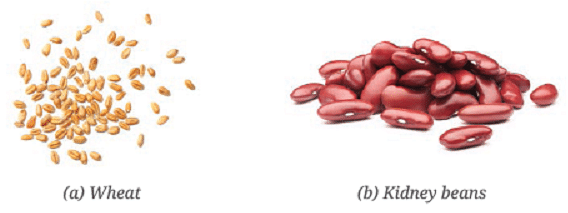 Ans:
Ans:
- (a) Wheat: Wheat has fibrous roots and parallel venation in its leaves.
- (b) Kidney beans: Kidney beans have taproots and reticulate venation in their leaves.
Q2: Names of some animals are given below. Group them based on their habitats. Write the names of aquatic animals in the area marked ‘A’ and terrestrial animals in the area marked ‘B’. Enter the names of animals living in both habitats in part ‘C’.
” Horse, Dolphin, Frog, Sheep, Crocodile, Squirrel, Whale, Earthworm, Pigeon, Tortoise”
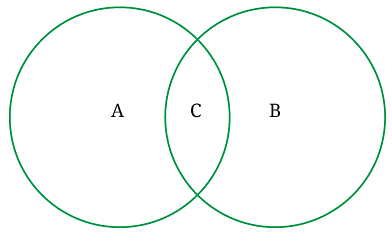 Ans:
Ans:
- A (Aquatic): Dolphin, Whale, Crocodile, Tortoise
- B (Terrestrial): Horse, Sheep, Squirrel, Pigeon
- C (Both): Frog, Earthworm
Q3: Manu’s mother maintains a kitchen garden. One day, she was digging out radish from the soil. She told Manu that radish is a kind of root. Examine a radish and write what type of root it is. What type of venation would you observe in the leaves of the radish plant?
Ans:
Radish has a taproot system. The leaves of the radish plant have reticulate venation.
Q4: Look at the image of a mountain goat and a goat found in the plains. Point out the similarities and differences between them. What are the reasons for these differences?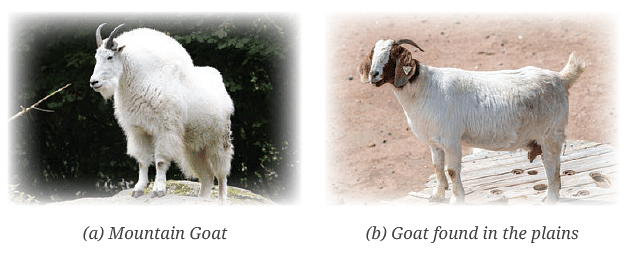 Ans:
Ans:
- Similarities: Both goats are herbivores and have hooves.
- Differences: Mountain goats have stronger legs and hooves adapted to rocky terrain, while goats found in the plains have smoother hooves suited for softer ground.
- Reasons for differences: Adaptations to their respective habitats for efficient movement and survival.
Q5: Group the following animals into two groups based on any feature other than those discussed in the chapter—cow, cockroach, pigeon, bat, tortoise, whale, fish, grasshopper, lizard.
Ans:
- Animals that can fly: Pigeon, Bat
- Animals that cannot fly: Cow, Cockroach, Tortoise, Whale, Fish, Grasshopper, Lizard
Q6: As the population grows and people want more comfortable lives, forests are being cut down to meet various needs. How can this affect our surroundings? How do you think we can address this challenge?
Ans:
- Effects on surroundings: Loss of biodiversity, disruption of ecosystems, climate change, soil erosion, and loss of habitat for wildlife.
- Addressing the challenge: Promote afforestation and reforestation, implement strict laws against deforestation, encourage sustainable use of resources, raise awareness about the importance of forests, and support conservation projects.
Q7: Analyse the flowchart. What can be examples of ‘A’ and ‘B’?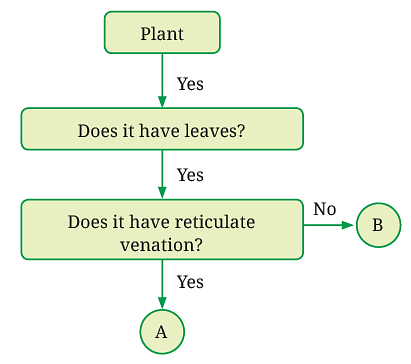 Ans:
Ans:
- A (Plant with leaves having reticulate venation): Mango
- B (Plant with leaves having parallel venation): Grass
Q8: Raj argues with his friend Sanjay that “Gudhal (hibiscus) plant is a shrub”. What questions can Sanjay ask for clarification?
Ans:
Does the plant have a hard and woody stem?
Is the plant medium-sized and bushy?
Does the plant have multiple branches arising from the base?
Q9: Based on the information in the table, find out examples of these plants for each group. Ans:
Ans:
- Group A (Dicot with taproot): Mustard, Pea
- Group B (Monocot with fibrous root): Maize, Grass
Q10: Observe the labelled part of a duck in the picture given below. What differences do you observe in the feet of the duck compared to the other birds? Which activity would the duck be able to perform using this part?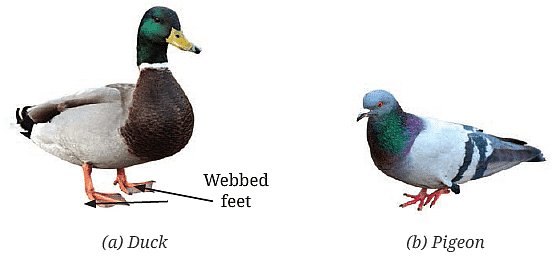 Ans:
Ans:
- Differences in feet: Ducks have webbed feet which are different from the non-webbed feet of other birds like pigeons.
- Activity: The duck would be able to swim efficiently using its webbed feet.

